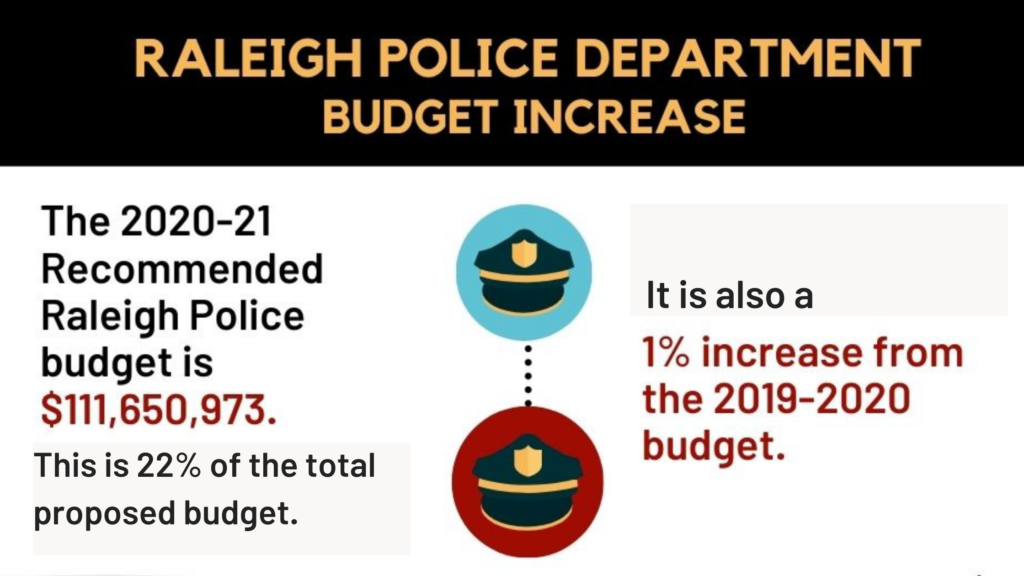Budgets are moral documents. They tell us what our governments prioritize, whether it’s spending money on supporting marginalized communities through housing assistance or arming cops with military-grade weapons. In North Carolina, it is clear that budgets do not account for Black and Brown communities across the state. Our tax money is going to the military and law enforcement instead of our communities devastated by COVID-19. That is why we are forced to take the streets chanting,
Money for Jobs and Education, Not for Wars and Incarceration!
To have a world where Black and Brown communities thrive, we must take a divest/invest approach. This approach is adopted from the Movement for Black Lives and aligns with the #DefundPolice demand. #DefundPolice goes beyond dollars and cents and calls to:
- Reduce the power, scope, and size of law enforcement
- Delegitimize institutions of surveillance, policing, and punishment
- Advance a long term vision of abolition
- And build a world where our communities are genuinely safe
City and County Budgets

On the most basic level, cities and counties must provide some support for services we use every day. And the amount that is spent on this gets decided each year through a local budgeting process. It is important to note that each city is NOT required to have law enforcement, but each county MUST provide law enforcement and jails. Here is an example of what a breakdown of spending looks like:

Elected officials on the state and local levels are responsible for allocating taxpayer funds to law enforcement, jails, and prisons. As a tactic, we can pressure elected officials to reduce funding for law enforcement. However, they are not the only elected officials who matter in this process. 2022 is an election year for sheriffs, district attorneys, and other judicial officials who make decisions about policing and incarceration. While we know some information about city police budgets thanks to the great work of many national collectives, we don’t hear too much about sheriff and jail budgets, and it’s because sheriff’s offices lack transparency on their spending. But, we DO hear about the expensive fees people pay to call their incarcerated loved ones, the high costs of inadequate healthcare services, and how basic things like ramen and toothpaste cost more in jails than at the grocery store.
With the help of Law School students at Duke and UNC-Chapel Hill, we started gathering budget information on the 100 Sheriffs across the state and the budgets set aside for the jails they run. You can view 22 of those Sheriff budgets from 2021 and 2022 here.
Knowing Budgets is the First Step!
To make a divest/invest campaign in your county or city, we recommend you start by researching the budgets of law enforcement agencies. Make sure that after your research is completed, translate the data into easy-to-understand infographics for your base, like this:

After researching the budgets and the cuts to other government-funded programs, the next step is to design a campaign that divests from law enforcement and INVEST in programs facing cuts or underfunded. For more detailed steps of the process, check out pages 9-10 of the #DefundPolice toolkit and stay tuned for future blog posts covering campaign steps.
If you want to learn more about advocating for a divest/invest campaign, we invite you to sign up for our newsletter to receive notifications on our latest blog post. We hope to cover any confusions and questions you have regarding budgets for law enforcement through our Police and Sheriff Budget blogs. In the coming weeks, we will be answering questions like:
-
- What are tools and resources for researching budgets?
- What do current divest/invest efforts look like in North Carolina?
- How do organizers use budget research in their work?
If there is anything specific you want us to cover, don’t hesitate to contact us!

